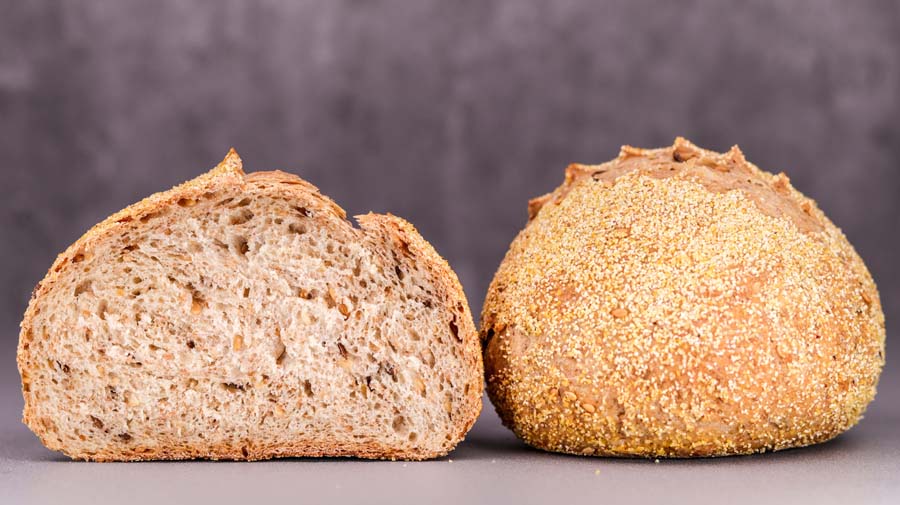Scalding is a great technique for making bread extra soft and making it stay softer for longer. A portion of flour is mixed with boiling water which gelatinizes the starch in the flour. Adding scalded flour to the final dough gives it an extra soft texture. It also allows us to increase the hydration as the swollen starch absorbs the water a lot more effectively. You can find many recipes on my channel using this technique for good reason. It can replace eggs and fats to an extent, so it is great for plant-based baking.
We have made tortillas using 100% scalded flour and they turned out great. Super soft, flexible, and able to stay soft for longer. But I had never tried making loaves or rolls using such an extreme amount of scalded flour. Someone recently asked me to do it in the comments section of the tortilla recipe, so I thought it would be interesting to give it a go.
Technically, it is very simple. All we need to do is mix all the flour with boiling water, leave the scald to cool down, then add the rest of the ingredients to make the final dough.
A couple things need to be considered. How do we add the yeast and other ingredients to the scald. And of course, there was the question of whether such a dough would even be able to hold its shape. Scalding cooks the gluten forming proteins resulting is a weaker gluten structure. Scalding all the flour may just make the dough too weak.
Adding the remaining ingredients is simple. All we need to do is reserve some of the water so that we can mix the yeast and anything else before adding them to the scald. And the question of whether the bread would turn out ok has been answered because we have a video here.
First, I tried to make a pan loaf with high hydration and cold fermentation. This was just an experiment to see how it turns out so that I can adjust and make a proper recipe afterwards. This loaf proved that the concept works, but adjustments needed to be made to achieve a nice soft texture. Cold fermentation works against softness, so that was one thing to adjust right off the bat.
The second recipe is an actual useable recipe that can be made regularly. You can even turn it into a loaf if you like, freestanding or baked in a tin. Adjust it by using different seeds, swapping the honey for some other sweet syrup or leave it out altogether.
Watch the video down below for detailed instructions.
Ingredients
For the scald –
200g (7oz) white bread flour
50g (1.75oz) whole wheat flour
30g (1oz) wholegrain rye flour
5g (0.17oz) salt
10g (0.35oz) honey
10g (0.35oz) sesame seeds
5g (0.17oz) caraway seeds
10g (0.35oz) butter
180g (6.35oz) boiling water
To finish the dough –
2g (0.07oz) instant dry yeast or 2.4g (0.08oz) active dry yeast or 6g (0.21oz) fresh yeast
20g (0.7oz) water
If you are using active dry yeast, then you may need to let it sit in the water for 10 minutes before adding the other ingredients or else it could take a lot longer to raise the dough.
Method
- Make the scald. Combine all the ingredients except the flour. Make sure the scald is hot. I re-heated it in the microwave after the first mix. Add the flour and mix until there is no dry flour left. Cover and leave to cool down to room temperature.
- Make the final dough. Hydrate the yeast in the remaining water. Add the yeast mix to the scald and squish it all together until well combined.
- Cover and ferment for 1 hour.
- Ferment for 1 more hour.
- Divide the dough into 4 equal pieces and shape into balls. Roll the dough balls in cornmeal (optional).
- Cover and final proof for 1 hour.
- Bake at 170C (340F) fan on for 20 minutes.
Keep in mind that the conditions in each kitchen are different, so fermentation times may vary for you. It is up to the baker to control the bread and react accordingly.
Your oven may be different too, so your baking time may vary.



